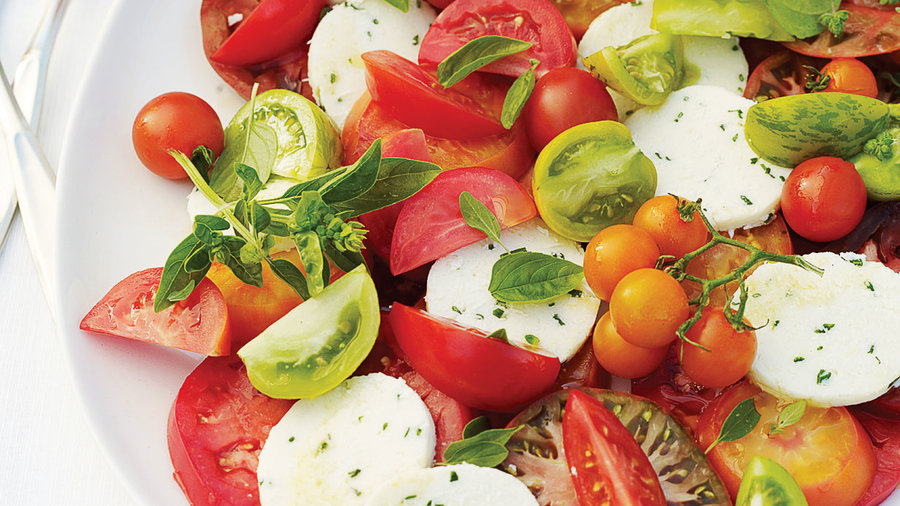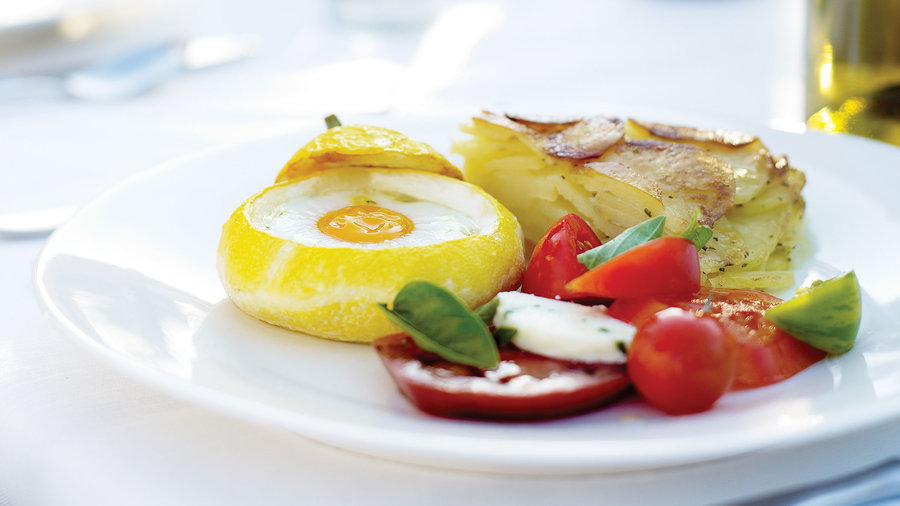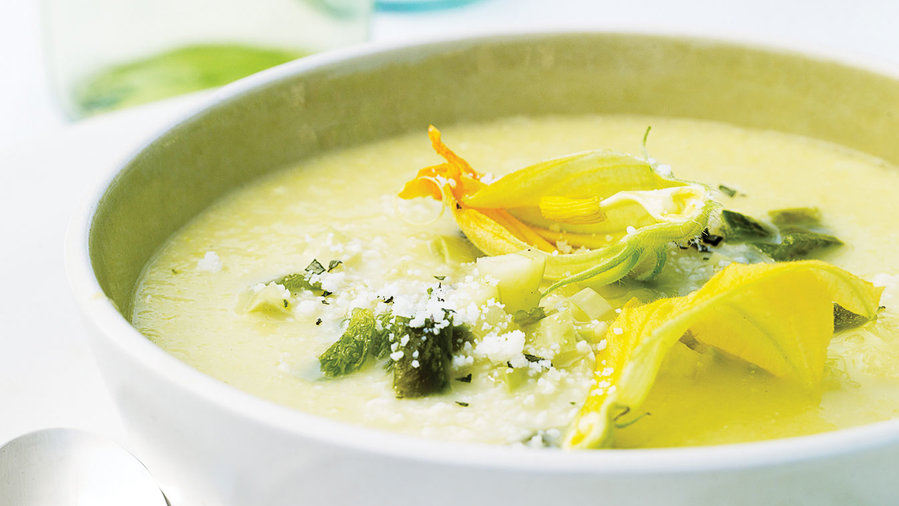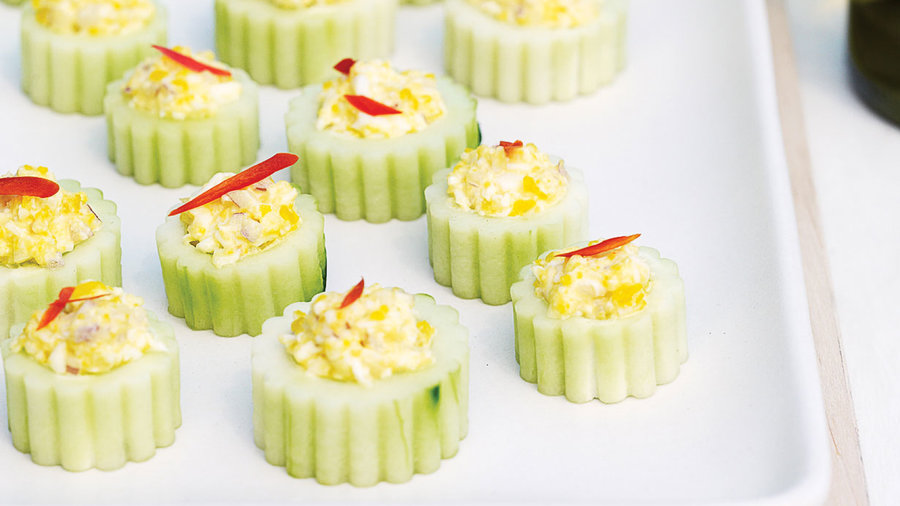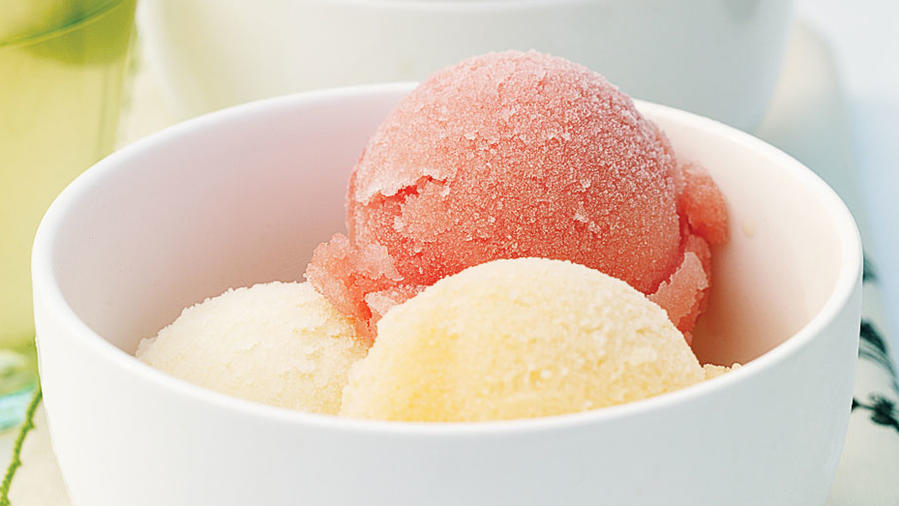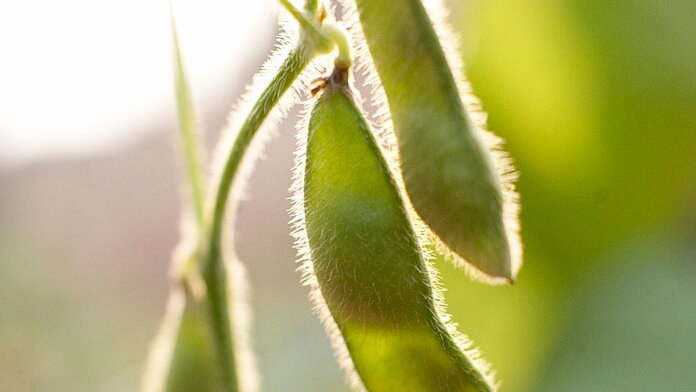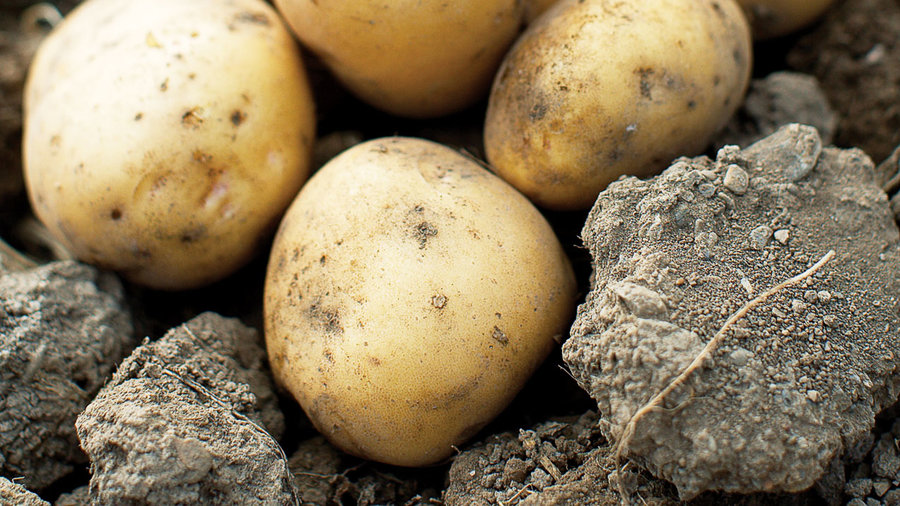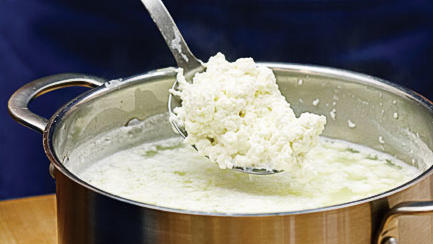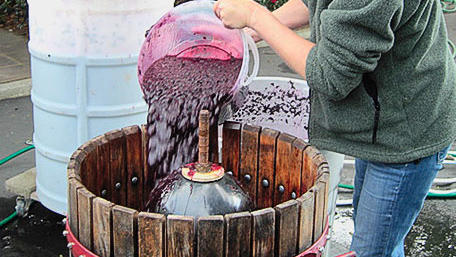Thomas J. Story
Tomato and Herb Salad with Fresh Chive Cheese
This is the salad to make with tomatoes from the farmers’ market or your backyard, ideally when they’re still warm from the sun. The surprise is the easy homemade cheese.
Thomas J. Story
Pattypan Squash with Eggs
Harvest or buy the squash when they’re little and sweet.
View recipe: Pattypan Squash with Eggs
Corn Soup with Roasted Poblanos and Zucchini Blossoms
The essence of sweet, just-picked summer corn. Serve it hot or cold.
View recipe: Corn Soup with Roasted Poblanos and Zucchini Blossoms
Thomas J. Story
Deviled Cucumber Cups
These pretty little bites showcase the bright color of pasture-raised chicken’s eggs.
Kimberley Burch
Smoky, salty, and addictive, these soybeans were inspired by a recipe for griddle-roasted peas in the pod in My Bombay Kitchen: Traditional and Modern Parsi Home Cooking (University of California Press, 2007) by Niloufer Ichaporia King.
Watermelon, Cantaloupe, or Honeydew Sorbet
This sorbet is only as good as your melon, so use the best fruit you can find (or grow).
Rob D. Brodman
'Yukon Gold' potatoes
(‘Yukon Gold’) The best all-purpose potato, with buttery, sweet flesh
Rob D. Brodman
We made cheese
Fundamentally, cheese is just coagulated milk. Skilled cheesemakers work with cultures and molds, brining, and aging to produce a wealth of cheeses. But if you want to make cheese the easiest possible way, here’s how:
1. Cook Heat whole milk slowly in a heavy pot, stirring often. (This takes about 30 minutes, so bring a book.)
2. Add acid Just as it boils, take it off the heat and drizzle in an acid (we grew lemons, so we used their juice).
3. Ta-da! Fat white curds―the cheese―form immediately, floating in a greenish whey. (Remember Little Miss Muffet?)
4. Drain Pour the curds into a cheesecloth-lined colander, pull the cloth up around the curds, twist, and squeeze out the whey. Add salt. Crumble on soup or salad, or press curds (try a plate and cans) until they’re solid.
Tip: Mix the curds with herbs or spices and try perforated molds for interesting shapes.
E. Spencer Toy
We Crushed Grapes For Wine
Winemaking is like following a very large, slow recipe. Some peak moments:
Picking How long does it take to harvest 500 pounds of Syrah? Only a couple of hours for Team Wine, who cut bunches of sweet, seedy grapes in a remote Thomas Fogarty Winery vineyard in the Santa Cruz Mountains.
Crushing In a parking lot at Sunset, we pulverized the grapes in a borrowed crusher-destemmer ― like a large funnel with a rotating screw in the middle. We also used our bare feet, I Love Lucy–style. Stomping grapes is a lot harder than it looks, like huffing up a stair climber set in quicksand. Especially if you’re laughing.
Punching Down We stirred our burbling, fermenting cauldrons (okay, clean trash cans) of crushed grapes, juice, and wine yeast with a big wooden paddle, submerging the thick cap of skins to keep them moist and sending color and flavor into the juice. We measured the sugar daily to make sure the yeast was gobbling it up and converting it into alcohol, putting our high school chemistry to use.
Pressing When sugar levels dropped to zero, primary fermentation was finished ― we’d made wine! It was time to clean it up with a press, which looked like wood fencing wrapped around a Christmas tree stand. We dumped in our wine and inflated a rubber bladder in the middle, squishing the wine through the wood slats. We ran a bucket brigade to catch wine pouring from the spigot, then carefully splashed it into glass jugs called carboys.
Oaking The easiest and cheapest way to give a wine oak character isn’t a barrel but oak chips. We tossed a small handful of toasted chips into each 5-gal. carboy.
–Erika Ehmsen
Thomas J. Story
Discover the joys of growing your own food
When creating a menu from the garden, the challenge is to vary shapes and textures so you don’t end up with a parade of salads. Think about which crops would be good in soups, or appetizers, or served whole (pattypan squash, for instance).
No matter what you serve, it will probably taste delicious … because the truth is, pride has a flavor too.
Now suppose you live on the kind of neighborly street that gets together for cookouts and Halloween trick-or-treating. What if one of you grew some tomatoes and corn, and another decided to raise bees, and someone else a couple of houses down kept a few chickens? Just imagine the one-block feasts you could have …
